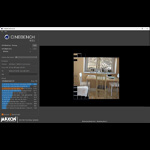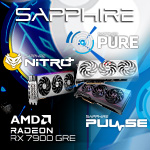
Following up on last week’s topic, we will once again dive ear-long into the world of gaming headsets.
Microphone
All gaming headphones come equipped with a microphone, usually one that is foldable or retractable or even detachable—and usually with a sound quality that leaves much to be desired. Of course, there are some exceptions, but don’t trust the marketing alone on this. It is a good idea to hear a sample of a voice recorded with particular microphones. Good YouTube reviews often contain such samples.
https://www.youtube.com/watch?v=-FOBtpGvOYw
Of course, the first question you should ask yourself is whether you really need a microphone at all. If you do, it may be a better choice to pick up a solid set of non-gaming headphones with a separate microphone. There are many good quality stand-alone microphones. For those looking to “gamify” their headset, there is a solution like ModMic.
https://www.youtube.com/watch?v=-Fw6XLLIosY
In my experience, if you are not a streamer / YouTuber, going for a stationary solution like Blue Yeti will be too much of a hassle.
Foldable & portable
If the headset:
- is closed
- has a jack connector or uses a Bluetooth connection
- has a detachable (or at least retractable) microphone
- isn’t very bulky and/or flashy
it is worth considering using it outdoors, paired with a smartphone or other mobile device. From an economic point of view, this makes sense, because you don’t have to buy one headset for a PC and another for outdoor usage.
Having the option of folding the headset and putting it into a dedicated pouch would be a nice addition, so keep a look out for such features.
Active noise cancellation
Some closed headsets feature active noise cancellation.
Such headphones are equipped with an additional microphone that records every sound around the user. Then a special chip generates counterwaves that are played inside the headphones. This technique helps to create a feeling that the user is listening to the music in total quiet, even though she or he might be in a noisy environment.
It is worth pointing out that active noise cancellation is not perfect, and some users find it uncomfortable to use. Further, how this feature is executed may differ from one producer to another and it usually impacts quality of sound in variable manner.
Remember that turning it on requires additional USB or battery power and active noise cancellation will drastically reduce the battery life of a wireless headset.
RGB
RGB backlight is more a matter of taste and personal preference: a streamer might opt for headphones with RGB just for the spectators. But RGB on wireless headsets also drains the battery quickly and significantly decreases the operation time on one charge.
Impedance
Impedance topic usually applies to higher-end gear, since gaming and most mid-range priced headphones don’t feature high impedance. However, if you’re going to purchase headset with this feature, there are a few issues to bear in mind. First, if you plug headphones with high impedance into a standard soundcard built into the motherboard or a smartphone, they may lack the power to drive them properly. Headphones will be quiet even at the loudest setting. And the loudest setting is not optimal because it introduces distortion.
High impedance of the headset could indicate potentially good sound characteristics, but it is by no means a given that high impedance by definition translates into great sound. Typically, over-ear headphones feature 32- to 64-Ω (Ohm) impedance. For 300 or 600 Ω models, you definitely need a DAC.
[caption id="attachment_3716" align="aligncenter" width="1000"] SoundBlaster X G5 DAC[/caption]
SoundBlaster X G5 DAC[/caption]
Sound
There is no universal and simple way to determine if sound is good or not. Merely reading marketing material guarantees you nothing. However, there are few parameters you should keep your eye on.
With straight-audio type headphones, price may indicate quality. But in the world of gaming headsets, it is not unheard of that very low-end drivers are put into very attractive looking headphones, hyped by efficient marketing and then sold to bring in sky-high margin.
My observations are that gaming headsets often put more emphasis on bass while neglecting mid-tones. Of course, it all comes down to the kind of sound you’re after and what you intend to use your headset for. Some headphones might not be optimal for listening to music, but work great for gaming.
Whatever you decide, I’d advise you to look to companies that specialize in sound – like Audio-Technica, Beyerdynamic and Sennheiser, to name three—or at least models that garner overall good opinions, like HyperX Cloud.
With THD, or Total Harmonic Distortion. The smaller the number, the better. 0,1% to 0,5% is acceptable for standard gear.
Frequency response. In theory, the higher the range, the better. It’s essential, however, that you not go below the gold standard 20-20 000 Hz range. Headphones with a frequency response of e.g. 15 – 28 000 Hz should sound better, but not everybody will have the ears to distinguish that.
When you make your choice, it’s always good to have a trusted reviewer at the least, or, ultimately, to listen to the headset yourself. In any case, bear in mind that a lot depends on personal preference—the headphones that sound like nirvana to some could be a mere notch above wheeze and sputter to others.
Happy listening and remember not to turn up the volume too much!




















